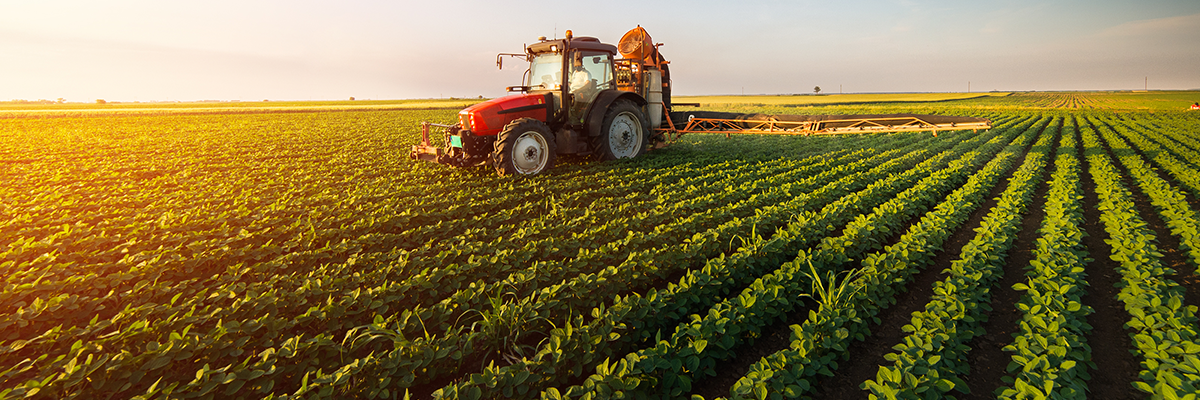
Agriculture
The use of plastics in crop protection has helped farmers increase production, improve food quality, minimize water consumption and reduce their ecological footprint.
For years, the growing use of plastics in agriculture has helped farmers increase crop production, improve food quality and reduce the ecological footprint of their activity. Not only do plastics allow for vegetables and fruits to be grown whatever the season, but these products are usually of better quality than those grown in an open field.
A wide range of plastics are used in agriculture, including, polyolefins (polyethylenes (PE), Polypropylene (PP), Ethylene-Vinyl Accetate Copolymer (EVA)) and less frequently, Poly-vinyl chloride (PVC), Polycarbonate (PC) and poly-methyl-methacrylate (PMMA).
These plastics provide:
Innovative and sustainable solutions: Thanks to the use of different plastics in agriculture, water can be saved, temperature can be maintained under the covers during the night, photoselectivity can improve certain flowers production and crops can even be planted in deserted areas. Plastic irrigation pipes prevent waste of water and nutrients, rain water can be retained in reservoirs built with plastics, and the use of pesticides can be reduced by keeping crops in a closed space such as a greenhouse or, for mulching, under a plastic film. Moreover, the emissions of pesticides in the atmosphere will be reduced as they will remain fixed on the plastic cover. Pest control plays a vital role in safeguarding crop yields.
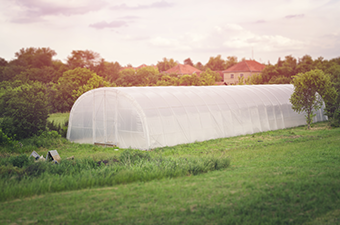
Greenhouses
Greenhouses are like intensive-care units. Thanks to them, plants are exposed to the sunlight and can grow in ideal conditions according to their physiological properties. The use of greenhouses indeed provides farmers with the possibility to create the appropriate environmental conditions that plants require for faster and safer growth, to avoid extreme temperatures and protect crops from harmful external conditions.
Low tunnels
Low tunnels have the same features as greenhouses, except for their complexity and their height. Crops that are the most commonly cultivated in tunnels are asparagus, watermelon, strawberries, etc.
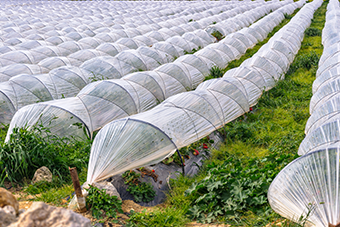
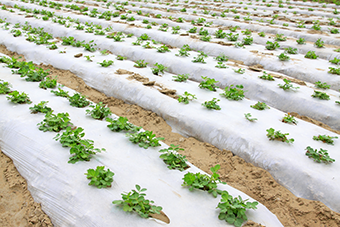
Mulching
Mulching or covering the ground with plastic film (usually black, transparent or white) helps maintain humidity as evaporation is reduced. It also improves thermal conditions for the plant’s roots, avoids contact between the plant and the ground and prevents weed from growing and competing for water and nutrients.
Plastic reservoirs and irrigation systems
When combined, plastic reservoirs and plastic irrigation systems make an essential contribution to water management. Water can be stored in dams covered with plastics materials to avoid leaking and distributed via pipes, drop irrigation systems and systems for water circulation.
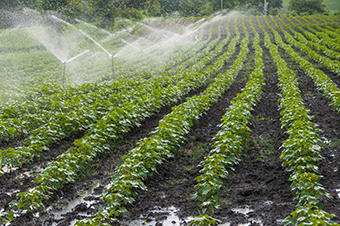

Silage
This application, which was developed to store grains for animal feed and straw during the winter, is further proof of the value of plastics. Plastic films used to store silage are resistant and the content can be easily transported and stored for long periods.
Other plastic applications
Other plastic applications include boxes; crates for crop collecting, handling and transport; components for irrigation systems like fittings and spray cones; tapes that help hold the aerial parts of the plants in the greenhouses, or even nets to shade the interior of the greenhouses or reduce the effects of hail.

A challenge is, how to ensure that films have the maximum life-span possible and are disposed of properly at the end of their lifes with minimal damage to the environment.
Recycling and recovery opportunities: At the end of their life cycle, agricultural plastics such as greenhouse covers can be recycled.
Plasticulture in Europe has a great commitment with the implementation of National Collection Schemes (NCS) for the management of agri- plastics waste in order to increase circular economy and to avoid having a negative impact on the environment. The model of promoting National Collection Schemes ensures high collection rates as well as an improvement in the quality of the plastic waste collected, both pre-requisites for recycling the plastic and the incorporation of recyclates into new products. Several countries have already implemented these NCS as France, Germany, Ireland, Finland or are starting with them as UK and Spain.
These NCS are based on an extended producer responsibility, shared between the converters and other stakeholders, farmers and distributors. The new plastic put on the market, finances its own recycling, through an eco-contribution applied on the sales price of the product. The Scheme’s performance begins on farm and the entire value chain is focused on best practices and operations to improve technical and economic efficiency and assure the plastics recycling.
Once retrieved from the fields, plastics are usually washed to eliminate sand, herbs and pesticides, before being grinded and extruded into pellets. The material can then be used again in the manufacturing of articles such as outdoor furniture. When mechanical recycling is not viable, chemical recycling and energy recovery are complementary options with different technologies available.



